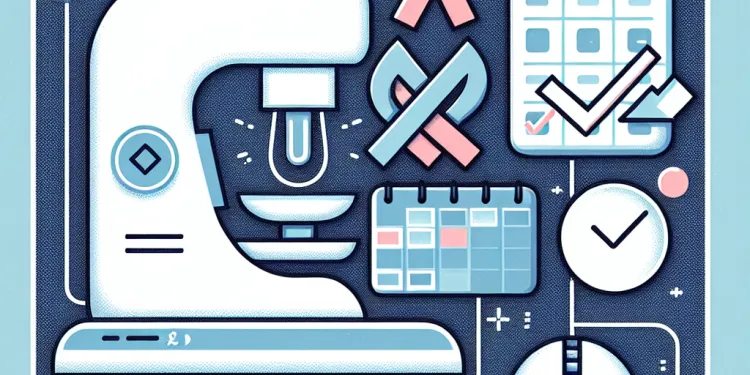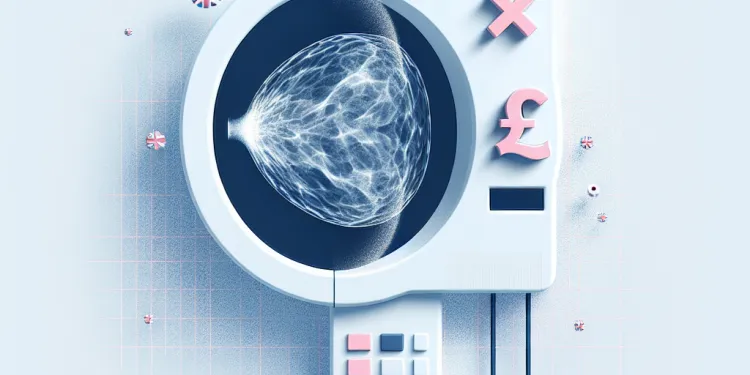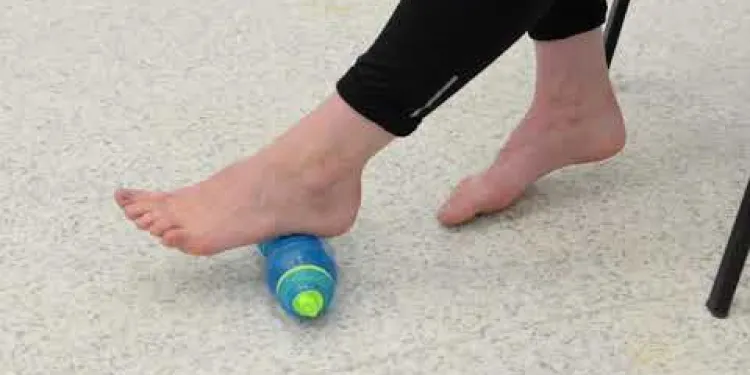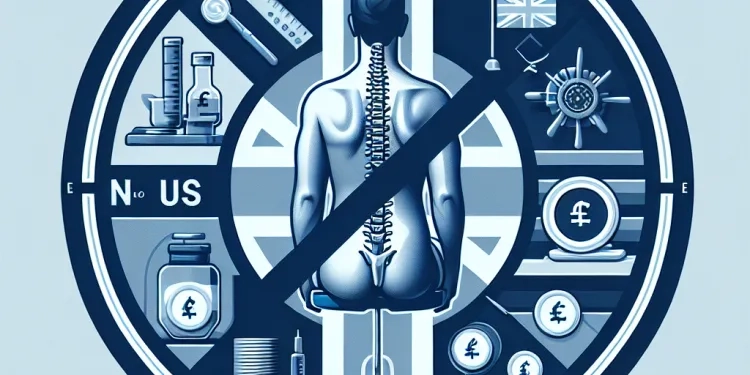
Find Help
More Items From Ergsy search
-

Is a mammogram painful?
Relevance: 100%
-

Mammograms
Relevance: 71%
-

What is a mammogram?
Relevance: 70%
-

What is a mammogram?
Relevance: 66%
-

How do I book a mammogram?
Relevance: 64%
-

Are there any risks associated with mammograms?
Relevance: 64%
-

What happens during a mammogram?
Relevance: 62%
-

How reliable are mammograms?
Relevance: 61%
-

How do I prepare for a mammogram?
Relevance: 61%
-

Are mammograms free on the NHS?
Relevance: 60%
-

What are the benefits of regular mammograms?
Relevance: 60%
-

Can men have mammograms?
Relevance: 59%
-

Can I have a mammogram if I have breast implants?
Relevance: 58%
-

What if my mammogram results are abnormal?
Relevance: 58%
-

How often should I get a mammogram?
Relevance: 56%
-

At what age should I start having mammograms?
Relevance: 53%
-

Treating breast pain | United Lincolnshire Hospitals NHS Trust
Relevance: 38%
-

Foot Pain
Relevance: 37%
-

Is impetigo painful?
Relevance: 37%
-

Is a facelift painful?
Relevance: 37%
-

Shoulder pain | NHS
Relevance: 35%
-

Shoulder pain | NHS
Relevance: 35%
-

Heel pain | NHS
Relevance: 35%
-

Are chiropractic treatments painful?
Relevance: 34%
-

NHS breast cancer screening
Relevance: 33%
-

Mechanical Lower Back Pain
Relevance: 33%
-

Will I feel pain during the procedure?
Relevance: 33%
-

Advice on neck pain and whiplash
Relevance: 33%
-

Stomach ache and abdominal pain
Relevance: 33%
-

Period pain (dysmenorrhoea) - BSL
Relevance: 33%
-

Shoulder subacromial shoulder pain
Relevance: 33%
-

Shoulder pain | NHS
Relevance: 33%
-

Is the womb lining test painful?
Relevance: 32%
-

How to treat back pain | NHS
Relevance: 32%
-

How to deal with period pain | NHS
Relevance: 32%
-

How to deal with period pain | NHS
Relevance: 32%
-

Is a womb lining test painful?
Relevance: 32%
-

How to deal with period pain | NHS
Relevance: 32%
-

How to deal with period pain | NHS
Relevance: 31%
-

Tower Hamlets breast screening programme
Relevance: 31%
Understanding Mammograms
Mammograms are an essential tool in breast cancer screening and are used to detect early signs of breast cancer. In the UK, it is recommended that women between the ages of 50 and 70 undergo regular mammograms every three years as part of the NHS Breast Screening Programme. However, one of the common concerns among women is whether the procedure is painful.
Is a Mammogram Painful?
The experience of pain or discomfort during a mammogram can vary significantly from person to person. For most women, a mammogram may be uncomfortable, but not necessarily painful. The level of discomfort experienced can depend on several factors, such as individual pain tolerance, breast size and density, timing in the menstrual cycle, and the skill of the technologist performing the procedure.
During a mammogram, the breast is placed on a flat support plate and compressed with a paddle. This compression is crucial as it spreads the breast tissue out, allowing for a clearer image and more accurate results. The pressure only lasts a few seconds, but it is this pressure that often leads to discomfort. Some women describe the sensation as a firm squeezing or pinching feeling.
Factors Influencing Discomfort
Several factors can affect how a mammogram feels. Women with more sensitive breasts may find the procedure more uncomfortable. Hormonal changes can also play a role; for instance, breasts tend to be more tender just before or during a menstrual period. Taking these factors into account, it is often suggested to schedule a mammogram for a time when breasts are least likely to be tender, such as the week after a menstrual period ends.
Additionally, the size and density of the breasts can impact discomfort levels. Women with denser breast tissue may experience more pressure during the exam because more compression may be necessary to obtain clear images. However, the compression is critical for diagnostic accuracy and reduces the amount of radiation needed for the imaging process.
Tips to Minimize Discomfort
There are some steps women can take to minimize discomfort during a mammogram. Communicating openly with the radiographer or technologist about any concerns can help. They can often adjust the compression to improve comfort without compromising the quality of the images. Taking over-the-counter pain relief, like paracetamol or ibuprofen, about an hour before the appointment may also help alleviate discomfort.
Wearing a comfortable, two-piece outfit to the appointment can also make the process smoother, as you will only need to remove the top clothing. Finally, ensuring you stay calm and relaxed can make a significant difference, as tense muscles can add to discomfort.
Conclusion
While a mammogram can cause discomfort for some women, it is generally a quick process and a highly effective tool in early breast cancer detection. The potential discomfort is outweighed by the benefits of early detection and the improved outcomes it can provide. It is crucial for women to speak openly with their healthcare providers about any concerns they have regarding mammograms to ensure they receive support and advice tailored to their needs.
Understanding Mammograms
Mammograms are important for finding breast cancer early. In the UK, women aged 50 to 70 should have a mammogram every three years. This is part of the NHS Breast Screening Programme. Some women worry if a mammogram hurts.
Is a Mammogram Painful?
How a mammogram feels can be different for everyone. For most women, it might feel uncomfortable but not really painful. How much it hurts depends on things like how much pain you can handle, breast size, and where you are in your menstrual cycle.
In the test, your breast is placed on a flat plate and pressed down with a paddle. This pressure is needed to see the breast tissue clearly. The squeezing only lasts a few seconds. Some women say it feels like a strong squeeze or pinch.
Factors Influencing Discomfort
Some things can make a mammogram feel more uncomfortable. If you have sensitive breasts, it might not feel nice. Your hormones matter too. Breasts can feel sore before or during your period. It’s often better to plan your mammogram for when your breasts are less tender, like the week after your period.
The size and feel of your breasts can also matter. If your breasts are dense, you might feel more squeeze during the test. The squeeze is needed to get clear pictures and use less radiation.
Tips to Minimize Discomfort
Here are some tips to make a mammogram easier. Talk to the person doing the test if you feel nervous or have concerns. They can help by adjusting things to make you more comfortable. You can take pain relief, like a paracetamol or ibuprofen, about an hour before the test to help with any discomfort.
Wear something comfortable that you can easily take off the top part, like a two-piece outfit. Staying calm and relaxed can also help since being tense might make it hurt more.
Conclusion
A mammogram might be uncomfortable for some, but it’s a quick test that helps find breast cancer early. This early finding can make treatment more successful. Talk to your healthcare provider if you have worries about mammograms. They can give you support and advice that fits your needs.
Frequently Asked Questions
Is a mammogram painful?
Some people may find a mammogram uncomfortable, but others experience only mild discomfort. Pain levels can vary based on individual sensitivity and breast tissue density.
Why can mammograms be painful?
Mammograms can be painful because they involve compressing the breast between two plates to get a clear image, which can cause discomfort for some individuals.
How can I reduce discomfort during a mammogram?
Scheduling your mammogram a week after your menstrual period, when breasts are less tender, and taking a pain reliever like ibuprofen beforehand might help reduce discomfort.
Are there any tips for a more comfortable mammogram experience?
Wearing a two-piece outfit to only undress from the waist up, staying relaxed, and communicating with the technician about your comfort can help make the experience better.
Is a mammogram more painful for women with dense breast tissue?
Women with dense breast tissue may experience more discomfort due to greater compression needed, but this varies from person to person.
Do first-time mammograms hurt more than subsequent ones?
First-time mammograms may cause more anxiety, which can increase perceived discomfort, but subsequent mammograms are often less stressful and therefore less uncomfortable.
How long does the pain from a mammogram last?
Any discomfort from a mammogram typically subsides shortly after the procedure, and most people do not experience lingering pain.
Is there a difference in pain levels between digital and traditional mammograms?
Both types of mammograms involve compression, so pain levels are generally similar, but digital mammograms may be faster and slightly more comfortable for some.
Do mammograms hurt more if you have sensitive breasts?
Individuals with naturally sensitive breasts might experience more discomfort, but this varies and discussing concerns with the technician can help manage sensitivity.
Can anxiety influence the perception of pain during a mammogram?
Yes, anxiety can heighten the perception of pain, so staying relaxed and calm can help reduce discomfort during the procedure.
Why is breast compression necessary during a mammogram?
Compression is critical for obtaining clear images, reducing the radiation dose, and ensuring accurate results by spreading out the breast tissue.
Are there any medical conditions that can make a mammogram more painful?
Conditions like mastitis or fibrocystic breast changes can make mammograms more uncomfortable, and these should be discussed with a healthcare provider before the exam.
Can I take any medication to ease the pain of a mammogram?
Over-the-counter pain relievers like ibuprofen or acetaminophen taken before the procedure may help alleviate discomfort.
Do mammogram machines vary in the level of comfort they provide?
Modern mammography machines may have features designed to enhance comfort, but the experience varies based on the machine and technician.
Does breast size affect the pain experienced during a mammogram?
Breast size might influence comfort levels, with smaller or larger breasts sometimes requiring different positioning, but pain perception is highly individual.
Are there any alternatives to mammograms if they are too painful?
Alternatives like ultrasound or MRI exist, but they're used based on medical necessity and guidelines, not typically as replacements for routine mammograms.
How does a mammogram feel during and after the procedure?
During the procedure, you might feel firm pressure from compression; after, some people feel normal immediately, while others have mild tenderness.
Can practicing deep breathing help during a mammogram?
Yes, deep breathing can help manage pain and anxiety, leading to a calmer and potentially more comfortable experience.
Are mammograms painful for men as well?
Men can experience similar discomfort during a mammogram, but breast compression is often less extensive than in women, potentially reducing discomfort.
What feedback do women generally give about mammogram discomfort?
Experiences vary widely; some report only mild discomfort or pressure, while others experience moderate pain, but most agree that it is manageable.
Does a mammogram hurt?
A mammogram is a special picture of your breast.
You might feel some pressure or squeezing.
If it hurts a lot, tell the nurse or doctor.
Some people find it uncomfortable, but it is quick.
To help you feel better:
- Breathe slowly.
- Bring a friend for support.
- Listen to music if allowed.
Some people might feel a mammogram hurts a bit. Other people might feel just a little uncomfortable. How much it hurts can be different for each person. It depends on how sensitive they are and what their breast tissue is like.
Why do mammograms hurt sometimes?
Mammograms are special pictures of breasts taken to check for problems.
They can hurt because the machine presses your breast between two plates. This squeeze helps to get a clear picture but might feel uncomfortable or painful.
To make it hurt less, you can:
- Take a pain reliever before the test.
- Talk to the person doing the test if it hurts a lot.
- Schedule the test a week after your period when breasts are less sensitive.
Mammograms might hurt because they squeeze the breast between two plates. This helps to take a clear picture, but it can feel uncomfortable for some people.
How can I make a mammogram more comfortable?
It is a good idea to schedule your breast check, called a mammogram, one week after your period. This is when your breasts are not as sore.
You can also take a pain pill, like ibuprofen, before you go. This might help make it hurt less.
How can I make a mammogram more comfortable?
Wear clothes with a top and bottom so you only need to take off your top. Stay calm and tell the helper if you feel uncomfortable or need help. This can make the visit nicer.
Do mammograms hurt more if you have dense breasts?
A mammogram is a special x-ray to look at breasts.
Breasts can be dense, which means they have more tissue.
This might make a mammogram feel more uncomfortable.
Some women say it hurts more, but it is different for everyone.
Here are some tips to make it easier:
- Try to relax and breathe slowly.
- Talk to the nurse or doctor if you feel worried.
- You can take a friend for support.
If a woman has thick breast tissue, a breast scan might hurt more because the breasts need to be squeezed tighter. But this can feel different for each person.
Do first mammograms hurt more than later ones?
A mammogram is an X-ray picture of the breast. It helps doctors check for breast cancer.
Some people worry that a mammogram will hurt. The first time might feel a bit different because it's new. You might feel some pressure or discomfort.
Remember, each person feels differently. Some people say that later mammograms hurt less because they know what to expect.
If you feel worried, tell the nurse or doctor. They can help you feel more comfortable.
You can also try to relax by taking deep breaths.
Bring someone with you for support if it helps.
Getting your first mammogram might make you feel worried. Feeling worried can make it seem more uncomfortable. But, when you have more mammograms later, you usually feel less worried and it's not as uncomfortable.
How Long Will a Mammogram Hurt?
A mammogram might hurt a little. The pain can feel like a squeeze. But it does not last long. It should go away when the mammogram is finished.
Here are some tips to help:
- Take deep breaths to relax.
- Ask the nurse to explain what will happen.
- Bring a friend for support.
Most people feel better quickly after a mammogram. The pain usually goes away soon after the test is done.
Do digital and traditional mammograms hurt differently?
Both kinds of mammograms press on the breast, so they can hurt the same amount. Digital mammograms might be quicker and feel a little better for some people.
Do Mammograms Hurt More if Your Breasts Are Sensitive?
A mammogram is a special picture of your breasts. Some people feel a little pain during a mammogram. If your breasts are already sensitive, you might feel more pain.
Here are ways to make it better:
- Tell the person doing the test if your breasts are sore.
- Try taking a pain reliever before the test.
- Schedule the test when your breasts are not as tender, like after your period.
Some people have very sensitive breasts. If your breasts are sensitive, a mammogram might hurt more. Everyone is different. If you are worried, talk to the person doing the test. They can help make it less uncomfortable.
Can feeling worried make a mammogram hurt more?
Sometimes, feeling worried or scared can make things feel different. This includes how much something might hurt.
When people feel anxious, it can make their body feel pain more strongly.
If you are nervous about a mammogram, try these tips:
- Take deep breaths to help you relax.
- Talk to the nurse or doctor about how you feel.
- Bring a friend or family member for support.
These can help make the experience easier for you.
Yes, feeling worried can make pain feel worse. Staying calm and relaxed can help you feel better during the treatment.
Why do we press on the breast during a mammogram?
We press on the breast during a mammogram to get a clear picture.
This helps the doctor see if everything is okay.
It might feel a bit uncomfortable, but it is quick.
If it hurts, tell the person doing the test.
You can take deep breaths to help you relax.
Pressing the breast during a scan is important. It helps to get clear pictures, lowers the amount of radiation, and gives better results by spreading out the breast tissue.
Can some health problems make a mammogram hurt more?
If you have breast problems like mastitis or fibrocystic changes, a mammogram might hurt more. Talk to your doctor about it before the test.
Can I take medicine to help with mammogram pain?
A mammogram can feel uncomfortable. Here are some tips to help with the pain:
- You can take a pain medicine like ibuprofen or paracetamol before the test. This can help with pain.
- Talk to your doctor or a nurse before taking any medicine. They can tell you what is safe for you.
- Try to schedule your mammogram when your breasts are not too tender. This is usually a week after your period.
Ask your doctor or nurse if you need more help or have questions.
You can take medicine like ibuprofen or acetaminophen, which you can buy from the store, to help feel better before the procedure.
Do mammogram machines feel different to use?
When you go for a mammogram, you use a special machine to check your breasts. Some machines might feel more comfortable than others. It can depend on how new the machine is or how well it’s made.
Here are some tips to make it easier:
- Ask the nurse or doctor what the machine will feel like.
- Tell them if you feel worried or scared; they can help you feel better.
- Take deep breaths to relax during the test.
New mammogram machines might make things more comfortable. But how it feels can be different depending on the machine and the person helping you.
Does breast size change the pain during a mammogram?
A mammogram is a special picture of the breast. It helps doctors check for problems.
Some people worry if big or small breasts will hurt more in a mammogram. Everyone feels different, but size alone does not make a big change in pain.
If you worry about pain, tell your doctor or nurse. They can help make it better.
You can ask someone to go with you for support.
Breast size can affect how comfortable you feel. People with smaller or bigger breasts might need to lie in different ways to be comfortable. But feeling pain is different for everyone.
What can you do if mammograms hurt?
Sometimes, a mammogram can be uncomfortable or hurt. If this happens, there are other ways to check your breasts.
Here are some ideas:
- Talk to your doctor: They can help find the best choice for you.
- Ultrasound: This is a scan that uses sound waves to see inside your breasts.
- MRI scan: This is a type of scan that uses magnets to take detailed pictures.
Remember, it's important to check your breasts. Talk to a trusted doctor for advice.
There are other tests like ultrasound or MRI. These tests are used when the doctor thinks they are needed. They do not usually replace mammograms, which are regular breast checks.
What does a mammogram feel like during and after?
A mammogram is a special type of X-ray for your breasts.
During the mammogram:
- The doctor will gently place your breast on a flat surface.
- A plate will press down on your breast. This might feel like a strong squeeze.
- It only lasts a few seconds.
After the mammogram:
- Your breasts might feel a bit sore or tender.
- This feeling usually goes away soon.
If you feel worried, bring a friend or family member to support you.
Talking to the nurse or doctor can also help you feel calm.
During the check-up, you might feel squeezing. This is normal. Some people feel okay right after. Others might feel a little sore.
Can deep breathing help when having a mammogram?
Taking deep breaths can help you stay calm. It can make you feel less nervous during a mammogram.
Try the following:
- Breathe in slowly through your nose.
- Let the air fill your belly like a balloon.
- Breathe out slowly through your mouth.
- Do this a few times to relax.
You can also bring along a friend for support or listen to music to feel more comfortable.
Yes, taking deep breaths can help with pain and feeling worried. It can make you feel calmer and more comfortable.
Do mammograms hurt for men too?
Getting a mammogram can sometimes feel uncomfortable. It is a type of X-ray that checks for changes in breast tissue.
Men can have mammograms, too. It might feel a bit strange, but it should not hurt much. Everyone feels it a little differently.
If you are worried, you can talk to the nurse or doctor. They can help you feel more at ease.
Using a calming app or listening to music during the test can help you feel better.
Men can feel similar pain during a mammogram. But, men's breasts are not squeezed as much as women's, so it might hurt less.
What do women usually say about how a mammogram feels?
Women talk about how mammograms feel. Some say it is uncomfortable or hurts a bit. They tell doctors to make it better.
If you feel nervous, you can talk to the nurse. Breathing slowly and deeply can help you feel calm.
People feel different things. Some people feel a little bit uncomfortable or a little bit of pressure. Some people feel more pain. Most people say they can handle it.
Useful Links
- Ergsy carfully checks the information in the videos we provide here.
- Videos shown by Youtube after a video has completed, have NOT been reviewed by ERGSY.
- To view, click the arrow in centre of video.
- Most of the videos you find here will have subtitles and/or closed captions available.
- You may need to turn these on, and choose your preferred language.
- Go to the video you'd like to watch.
- If closed captions (CC) are available, settings will be visible on the bottom right of the video player.
- To turn on Captions, click settings .
- To turn off Captions, click settings again.
More Items From Ergsy search
-

Is a mammogram painful?
Relevance: 100%
-

Mammograms
Relevance: 71%
-

What is a mammogram?
Relevance: 70%
-

What is a mammogram?
Relevance: 66%
-

How do I book a mammogram?
Relevance: 64%
-

Are there any risks associated with mammograms?
Relevance: 64%
-

What happens during a mammogram?
Relevance: 62%
-

How reliable are mammograms?
Relevance: 61%
-

How do I prepare for a mammogram?
Relevance: 61%
-

Are mammograms free on the NHS?
Relevance: 60%
-

What are the benefits of regular mammograms?
Relevance: 60%
-

Can men have mammograms?
Relevance: 59%
-

Can I have a mammogram if I have breast implants?
Relevance: 58%
-

What if my mammogram results are abnormal?
Relevance: 58%
-

How often should I get a mammogram?
Relevance: 56%
-

At what age should I start having mammograms?
Relevance: 53%
-

Treating breast pain | United Lincolnshire Hospitals NHS Trust
Relevance: 38%
-

Foot Pain
Relevance: 37%
-

Is impetigo painful?
Relevance: 37%
-

Is a facelift painful?
Relevance: 37%
-

Shoulder pain | NHS
Relevance: 35%
-

Shoulder pain | NHS
Relevance: 35%
-

Heel pain | NHS
Relevance: 35%
-

Are chiropractic treatments painful?
Relevance: 34%
-

NHS breast cancer screening
Relevance: 33%
-

Mechanical Lower Back Pain
Relevance: 33%
-

Will I feel pain during the procedure?
Relevance: 33%
-

Advice on neck pain and whiplash
Relevance: 33%
-

Stomach ache and abdominal pain
Relevance: 33%
-

Period pain (dysmenorrhoea) - BSL
Relevance: 33%
-

Shoulder subacromial shoulder pain
Relevance: 33%
-

Shoulder pain | NHS
Relevance: 33%
-

Is the womb lining test painful?
Relevance: 32%
-

How to treat back pain | NHS
Relevance: 32%
-

How to deal with period pain | NHS
Relevance: 32%
-

How to deal with period pain | NHS
Relevance: 32%
-

Is a womb lining test painful?
Relevance: 32%
-

How to deal with period pain | NHS
Relevance: 32%
-

How to deal with period pain | NHS
Relevance: 31%
-

Tower Hamlets breast screening programme
Relevance: 31%


